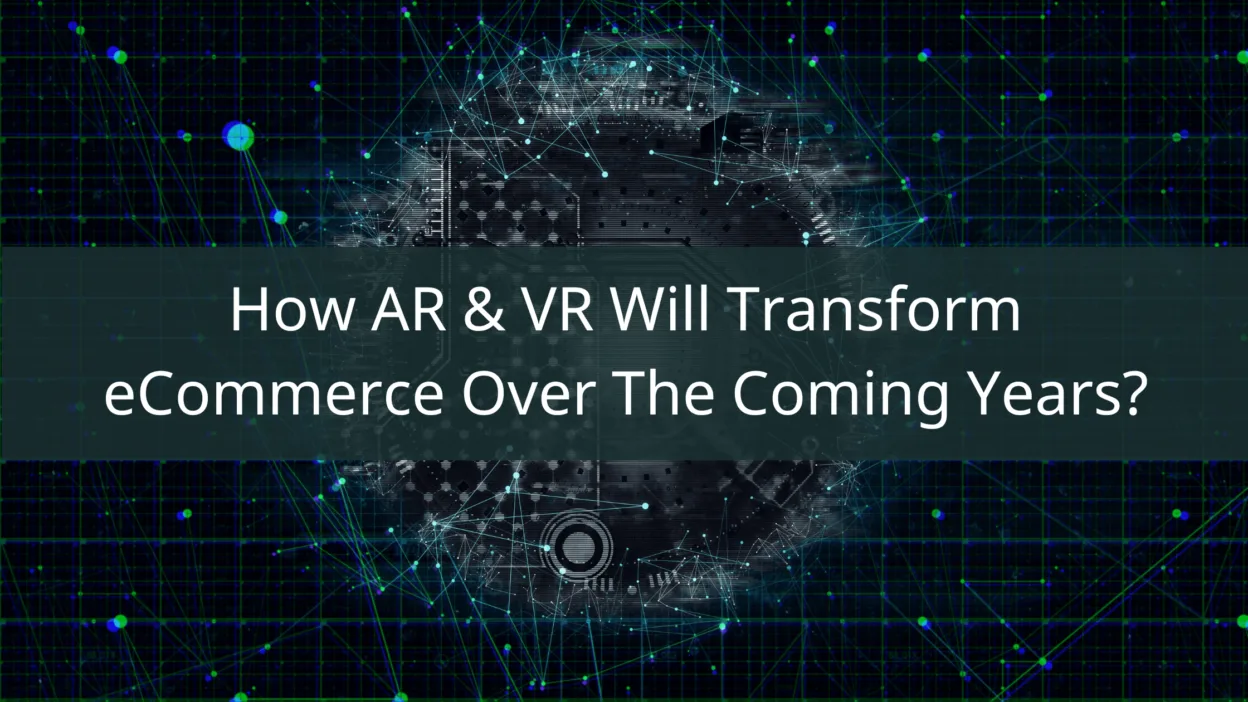It’s not an exaggeration to say that we are on the brink of a technological revolution that will transform virtually all industries, eCommerce included. In fact, we believe that eCommerce, in particular, will experience some profound changes over the coming years that will make the shopping experience vastly different but overall much better for both customers and retailers.
The rise of augmented reality (AR) and virtual reality (VR) will help create a world where online shopping won’t be limited to scrolling through images on a screen; instead, customers will be able to step into a virtual store, examine products up close, and even try them out before making a purchase.
And these are just some of the changes we can expect AR and VR will bring to the proverbial e-commerce table in the upcoming years. Below, we examine all the ways that technology is set to reshape online commerce, plus give you tips on how to adapt and thrive in this new, exciting era of eCommerce.
Immersive, More Satisfying Shopping Experience
Perhaps the best thing about the future integration of AR and VR in eCommerce is the potential to create immersive shopping experiences for customers. Instead of staring at static product images, they will be able to virtually walk through a store, browse shelves, and interact with products in three dimensions.
In practical terms, this means customers will be able to see how a piece of furniture fits into their living space before making a purchase. Or, how a sweater or a dress fits them (or their virtual avatar) before placing the article in the basket.
Enhanced Product Visualization
Together, VR and AR will enable a level of product visualization that was previously unimaginable. For instance, when a customer is looking for a new smartphone, AR will be able to project detailed specifications and features in their physical space, including the size of the phone, how it fits into one’s hand, etc., allowing them to explore the device fully before making a decision.
This level of engagement will surpass traditional online shopping by a mile, making the experience more akin to in-store browsing. As a bonus, the ability to virtually interact with products before buying will reduce the uncertainty that often follows online purchases.
Virtual Shopping Assistants
Another exciting feature of integrating these technologies into eCommerce will be virtual assistants. These assistants will be able to guide customers through the virtual store, answer their questions, and offer personalized recommendations in real-time.
You’ll notice we said ‘personalized recommendations’ above. These technologies, coupled with AI, will go beyond traditional algorithms to offer customers shopping advice and recommendations.
Using detailed information about customers, including their browsing history, past purchases, and even their physical surroundings, these technologies will be able to recommend products that truly align with customers’ changing tastes and needs.
Adapting to the New Era of Online Commerce
As a retailer trying to make sense of the ever-evolving landscape of eCommerce, adapting to the transformative powers of AR and VR is of utmost importance. Here are some key things to consider to help you adapt to the future so you can reap the benefits of these technologies and help your business stay ahead of market trends.
Invest in AR and VR Integration
The best thing you can do for the future of your business is to invest in AR and VR technologies to enhance the online shopping experience for your customers. When it comes to creating virtual products, it’s essential to invest in robust cloud-based CAD solutions so your 3D models can be high-quality and fully immersive for customers.
For instance, compare Onshape vs Fusion 360 – two leading cloud CAD solutions. Onshape boasts a user-friendly interface and real-time collaboration features, enabling designers to work concurrently on the same project. In contrast, Fusion 360, with its robust parametric modeling capabilities, offers a versatile platform for comprehensive product development.
Collaborate with developers to choose the best technologies for your business so you can have a unique and immersive environment for customers to explore.
Use Data Insights
To gain a deeper understanding of consumer behavior and preferences and provide personalized recommendations, leverage the power of data generated by AR and VR interactions. Analyze customer behavior within virtual stores to gain insights into preferences and purchasing patterns, and then use this information to refine your product offerings, tailor marketing strategies, and optimize inventory management.
Make it User-Friendly
Finally, make sure that the AR and VR experiences you offer are user-friendly and accessible. A seamless and intuitive interface is crucial for customer engagement, especially when it comes to attracting technology-shy customers.
While things may be complex and ever-changing behind the scenes, it’s essential to make everything (look) as simple as possible from the customer’s point of view. So, prioritize functionality, and you’ll create an enjoyable, user-friendly shopping journey that encourages customers to explore and interact with your products.






Now shopping is not just about clicking on pictures anymore. Soon, we’ll be able to step into virtual stores and see products up close using things like augmented reality (AR) and virtual reality (VR). Imagine trying out furniture in your room or seeing how clothes fit without actually trying them on sounds magical. It’s like being in a real store, but all from the comfort of our home.